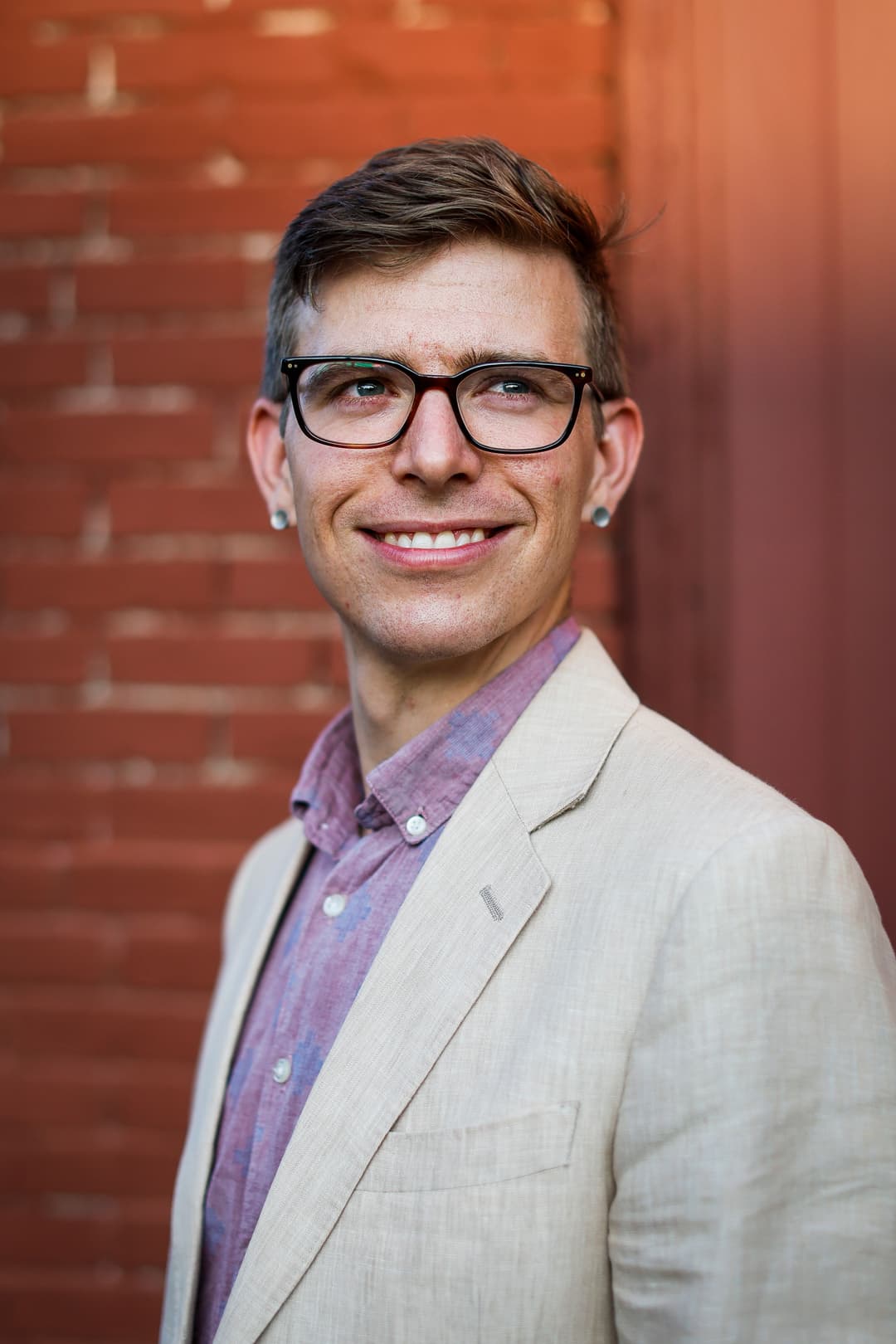
Coby Lefkowitz
Backyard
At Backyard, Coby Lefkowitz and his partners are on a mission to bring their vision for better and more livable neighborhoods to life, creating vibrant, walkable communities with bustling commercial activity anchored by human-scale multifamily housing.

COBY LEFKOWITZ WITH THE VIEW THAT INSPIRED HIS LOVE OF REAL ESTATE
EVA SERGEEVA FOR COMMONPLACE
Can you share a bit about your personal background and how you found your way into real estate?
I grew up in Westchester, about 30 minutes north of the city. It sounds weird and contrived, but for as long as I can remember I’ve been interested in real estate. Growing up, I always told people that I wanted to be a developer; like, who says that and who even knows what that is at 14? I guess being from the New York metro area and spending time in the city, you can't help but notice and wonder about all the tall buildings and all the cranes; the energy of it all was really exciting and empowering.
In high school, one of my favorite classes was Design Drawing Production. It was a mix of architecture and engineering and we were using AutoCAD and making models – really getting our hands dirty and being creative. But I was terrible at it; probably one of my worst grades in high school. And it’s funny, I was always so proud of my work, but it was awful – like, really, really bad. Still, it was the happiest ‘C’ I’ve ever gotten. At that point, I figured that I wasn’t an architect, but I still wanted to see if I could be involved in the built environment. I started learning a little about development and I liked that I could be creative, without necessarily having to draw plans. And that's why I initially chose to go to NYU to study development.
At NYU, I was part of the undergraduate real estate development program and I was also playing basketball there. I was 19 at the time and I think back then I, very naively, started feeling that a lot of developers were less thoughtful about design. It seemed transactional, like you were trading assets the way you might trade grain futures or sell options. And after a couple of injuries and surgery, basketball wasn't the same for me as it once was and I began looking for a change of scenery.
It was a natural transition at that point to start thinking about revisiting my creative side and using some of those softer design skills again. My thinking was that I could always go and run the numbers and I could always get back into development, but I couldn’t really learn design without being in that unique, creative environment; it’s just very difficult to replicate. I ended up visiting my brother at the University of Virginia around that time. It was new, exciting, and so different from where I grew up, so I ended up transferring there for architecture school and graduating with a degree in urban planning.

By Eva Sergeeva for Commonplace
Can you walk me through your career in real estate thus far?
After graduating, I worked in DC for a year with WashREIT. When I got there, they were transitioning away from legacy retail and office assets – a great stroke of foresight now, seven years later – and it was interesting to see that transition and understand how commercial works and why certain decisions are made at the institutional level. However, it wasn't quite what I expected from a development perspective. It felt abstracted from what I believe is the importance of placemaking and was much more of a commodified, transactional approach.
From there, I came back home to New York and worked for a boutique developer called Ash for several years. Everything they did was hands-on, which is great and a lot closer to the enlightened development that I had been trained in. Towards the end of my time at Ash, we were taking on a lot more hospitality work and the company really emerged as a creative tastemaker in hospitality. It was a cool environment and just an incredible experience; it was also probably the most creative work I'll ever do in my career. But after a few years, I wanted to get back to my planning roots, working on streetscapes, the space between buildings, and how the city itself operates, rather than the interiors of buildings.
At this point, serendipity interceded. I met my partner, Roee, through a close friend of ours. We hit it off almost immediately and a very organic relationship developed. We were both ambitious and hungry and we wanted to build companies and places. As it turns out, he had a couple of plots of land in San Diego and the city was passing progressive legislation to allow people to actually build housing, unlike other places in California like LA and San Francisco.
The first thing that caught our attention was the new ADU* legislation, which allowed you to place an additional home in a backyard as sort of an arbitrage play. As an urban planner, I thought that was really interesting because the city recognized that there was a severe housing crisis in San Diego and were actually trying to fix it. And on the design side, there were ways to be incredibly thoughtful; it doesn't have to be a shack that you put up in someone's backyard or just a renovated basement. We wanted to see if there was a way to address the needs of the city and create a more loving, thoughtful product, while also meeting the needs of our investors and LPs, so we decided to take the plunge and start Backyard.
*An accessory dwelling unit (ADU) is a smaller, independent residential dwelling unit located on the same lot as a stand-alone (i.e., detached) single-family home.

The ADU at 4777 35th Street
Backyard
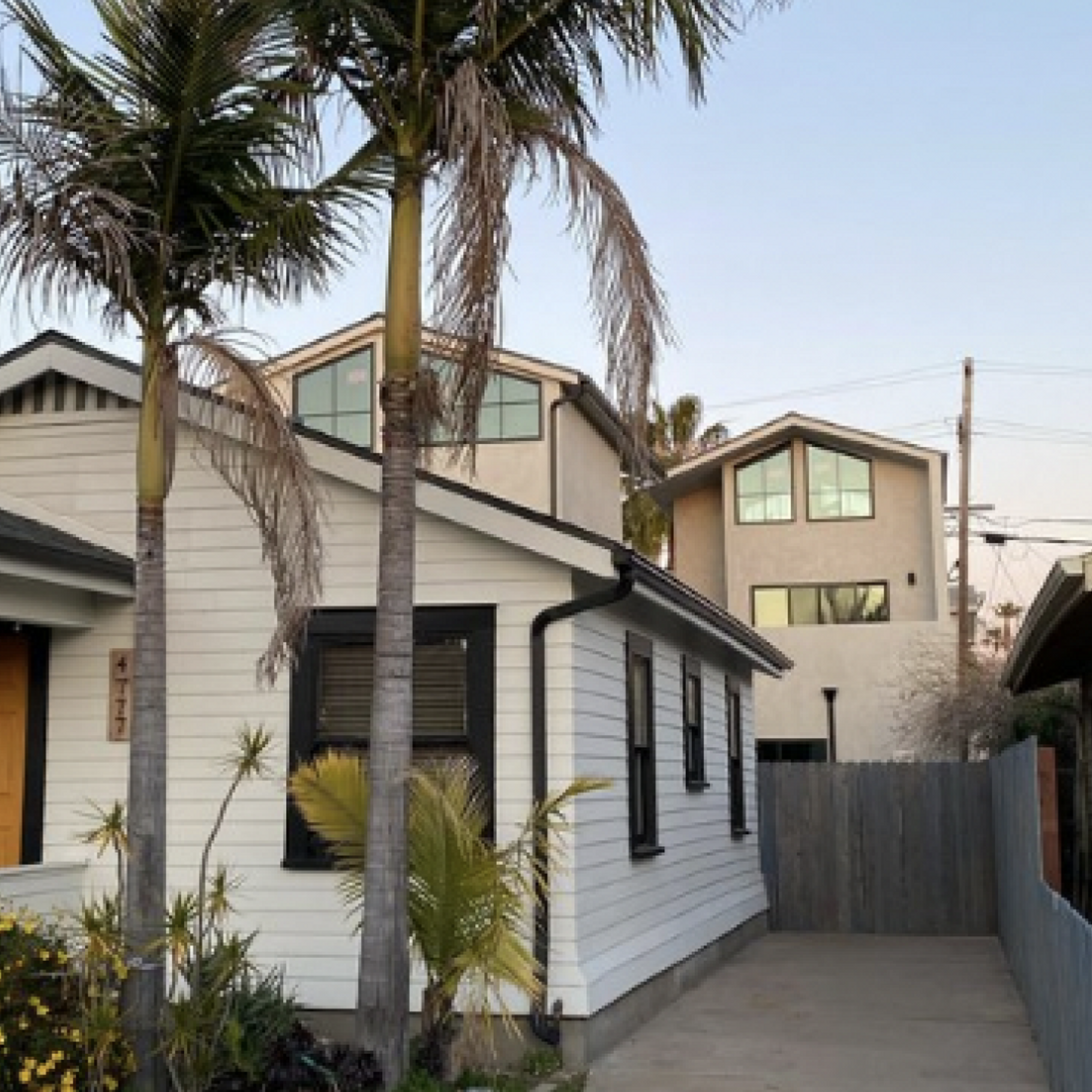
The ADU is tucked away in the backyard, barely visible from the street
How would you describe Backyard’s approach to development?
Our focus has been to build at what we refer to as the missing middle scale – three, four, or five unit buildings, up to around 50 units at the higher end. We believe the best neighborhoods in America are places like Brooklyn Heights, West Village, or Williamsburg in New York; Back Bay or Cambridge in Boston; Rittenhouse or Society Hill in Philadelphia; the list goes on. What these places have in common is that they have sufficient density to support a certain amount of services. For example, trendy restaurants or artisanal crafts stores. These kinds of businesses with a small footprint are not going to do well in the suburbs because there’s just not enough foot traffic to sustain them. But if you have a lot of people living around you, these businesses can survive and thrive, which helps make the neighborhood more desirable and livable.
Initially, we thought ADUs would be a good way to add incremental density to create these types of neighborhoods. However, what we’ve found is that if you're buying a single-family home and spending significantly to put two more units on it, you really only have so much margin. Even assuming construction costs and rents stay constant, which we know they haven’t, the cost of land can still jump up and erase all of your upside and then some. It becomes very difficult for smaller projects to pencil, especially in larger coastal markets. There’s a really difficult reconciliation of wanting to build a great product and needing to deliver the return on the investment that enabled you to build it in the first place.
We’ve shifted a bit to say that we can still be in this missing middle space by creating 3, 4, 5, or even 6-story buildings. Buildings at that smaller scale are relatively fine grained, narrow, and they don't sprawl horizontally or vertically. That's the area that we really want to stay within because if you build a 200 or 300 unit building, you start losing some of that humaneness that makes you want to walk around. You can certainly do really well financially and give your investors all the returns you promised and more, but in the process the neighborhood loses a real core piece of what makes it a nice place to be.
And from a design perspective, this scale still allows you to build things that reflect the personality and uniqueness of the region. People want to feel like they're in the city that they're living in. If I'm living in a shotgun house in New Orleans, it's unmistakably New Orleans and I couldn't be anywhere else; or if I'm living in a brownstone in Brooklyn, it looks and feels like Brooklyn and it couldn't be anywhere else. If I'm living in an EIFS-cladded*, 5-over-1 that has the same exact design in Naperville as it does in Fort Worth, I could be anywhere. And if that's the case, why should I be attracted to a specific neighborhood or city?
So that's a long winded way of saying we want to build beautiful things at a scale where we can both make projects pencil and preserve the uniqueness that makes a neighborhood great.
In what geographic areas do you operate? Are there any challenges unique to operating in these places?
There’s no specific geographic area, but there is sort of a “Goldilocks zone.” We’re looking for neighborhoods where the land basis is not too high, nor too low. It needs to be just right to support projects of our size, type, and thesis. And those neighborhoods, while different in every city, are definitely not downtown, or the neighborhoods immediately adjacent to downtown. It's really the neighborhoods that are maybe two or three neighborhoods removed from the core.
We’ve found that ideal zone in San Diego, but in places like New York, those kinds of neighborhoods don’t exist anymore. The challenge is that, in addition to being a massive economic powerhouse, cities like New York tend to have a lot of restrictive policies that further drive costs up to the point where you can't offset the price of land, especially if you’re spreading that basis over fewer units. To operate in a place like that, we would have to move so far out from the core that our product would be pushed into areas that might not be supportive of it, or even understand what our goals are, and suddenly we're outside of our thesis.
If we want to create walkable and dynamic neighborhoods, that can really only happen when you're closer to a city’s commercial core, but costs are still low enough to support smaller projects. It's a very difficult balance to strike.
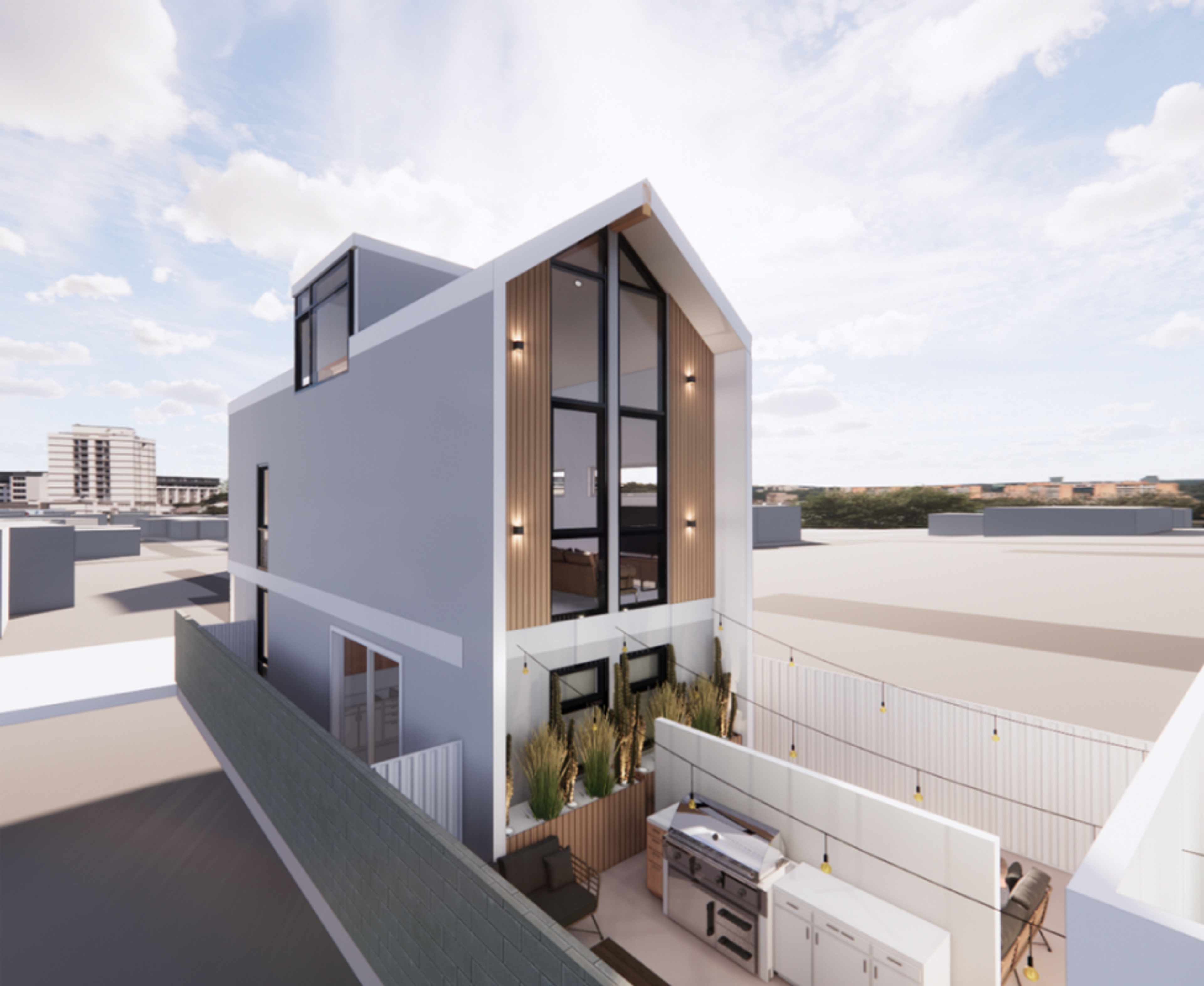
Renderings of 3322 Nile Street in San Diego
Backyard
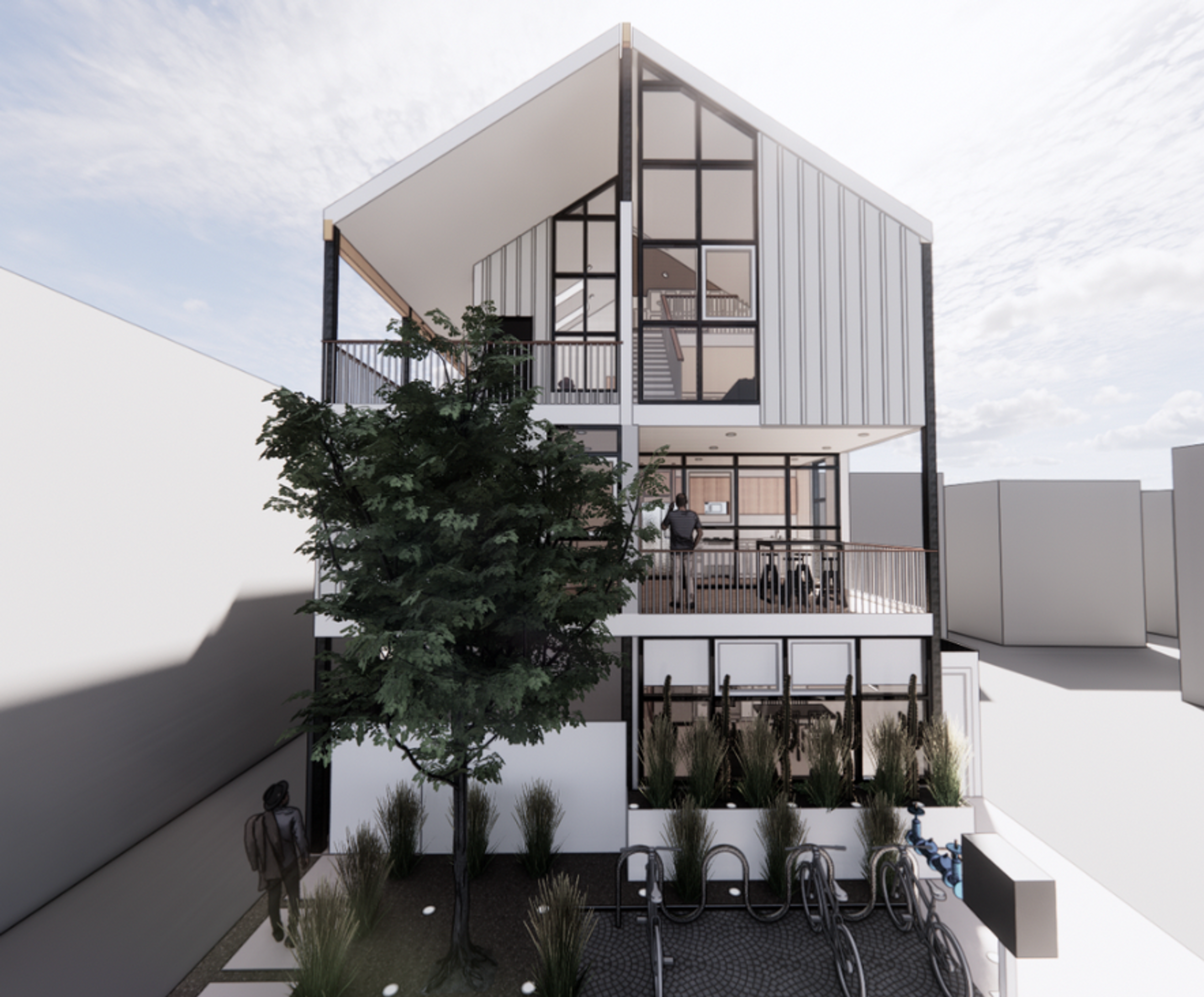
How many projects have you completed to date and Is there a project in your portfolio that highlights your approach to development, in particular?
We have three projects with a potential fourth on the way. We started with 4777 35th Street in San Diego, which we finished a couple of months ago now, about two years after we got started. That's a single family home with two townhome ADUs in the back. We’re in construction on our second project, 3322 Nile Street, which is an existing duplex with a new duplex ADU. And we're now moving onto larger developments with our third project at 4137 Louisiana Street, which is a single family home that we're planning to replace with a 12-unit building.
I’ll talk about the second project because we're in the middle of construction and actively working on it now. We acquired this property in November of 2021. It was a duplex in North Park, San Diego. And basically it was a single-story, flat stucco box with two one bedroom units. The property also came with a large backyard and a garage with space for one car.
Our approach was to use the ADU program in San Diego to demolish the parking garage and put up a second duplex on the lot. This worked great because San Diego is a city of alleys, which means that you can build units that face that alley and have separate entrances, as opposed to having everyone come through one narrow pathway from the front of the street.
We’ll renovate the original duplex, but we’re very excited about the new duplex. It will have a one-bedroom unit on the first floor and the second floor will have a lofted two-bedroom, similar in design to our first project. However, that second unit will also have 18 to 20 foot ceilings and huge windows for half of the unit, along with a mezzanine where the second bedroom will be. We achieved this through a gabled roof, which is quite unique and striking for Southern California – a lot of buildings are flat because it doesn't rain much. It’s definitely an East Coast design element that costs a bit more, but the beautiful pitched roof allows us to do really interesting things on the interior and it’s a little nod to my New York roots.
One of my favorite pieces of feedback so far is when someone asked us, “Why are you guys building a church? What’s with the soaring ceilings and the giant windows flooded with light? And why do you have pitched roofs?” To us, that confusion is a huge badge of honor because it shows that we’re really making an effort to buck the status quo. Instead of sticking to what’s tried and true and simple, we are creating truly unique and lovely homes.

Pitched roofs, a design feature more commonly found in the northeast, allow for soaring ceilings and giant windows that flood 3322 Nile with light
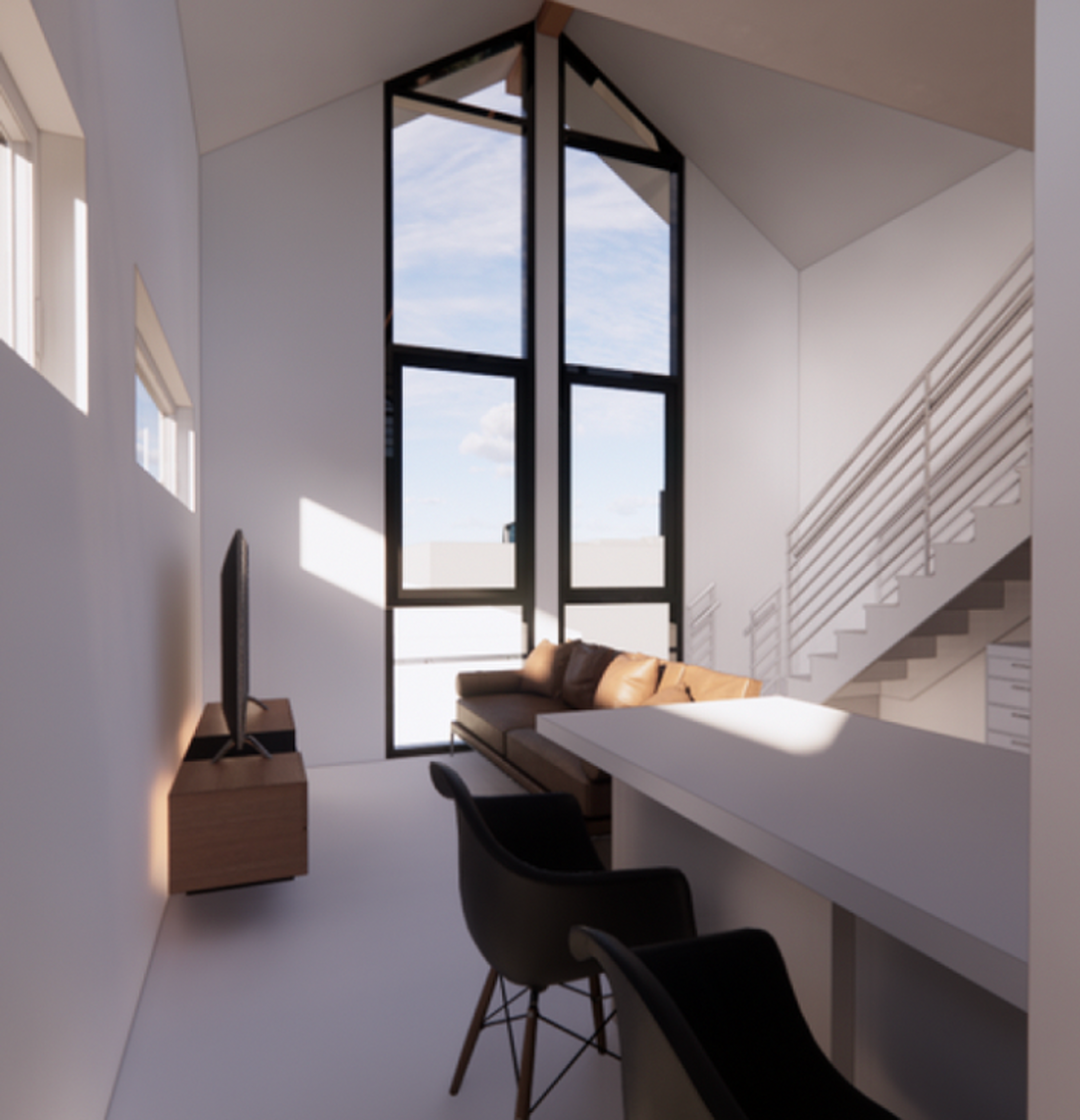
"Why are you building a church?"
Backyard
How do you finance your projects? What challenges do you face when trying to raise capital or secure financing?
On the equity side, to date we've been able to fund our projects with private capital. But raising capital has been difficult because real estate development is inherently very, very risky. If you haven't done a project before, you end up in this strange Catch-22, where the only way to do a project is if you've already done a project. So we’ve had to take a great deal of personal risk, and also really hustle to try to find capital to do our first and second projects.
It’s a very long, arduous road because you don't know if you’ll come in on time and budget – you likely won't. And so the question becomes whether or not you can support those higher holding costs. A lot of people can’t, even for smaller scale developments, and it pushes a lot of people out of the space – there’s a reason why fewer developers are building a bigger share of housing in America. You either have to be extremely well capitalized or ascetic in the way that you go about your life, which is what we've done – not making any money for many years. It's not glamorous at all. People have this notion that real estate developers are all big wigs and hot shots, but that is the furthest thing from the truth.
On the debt side, we’ve only used private credit so far because the products that we were building initially don’t have any Fannie or Freddie loans able to support them. We're also in a weird range where we're less than a million dollars in construction costs, which is the threshold that a lot of lenders look for in construction loans. And we don't qualify for single-family construction loans.
That said, we’ve found that if you can bring equity to the table you can usually find people to give you 8%, 9%, or 10% debt on a shorter note, or once you stabilize the property you can usually get more traditional financing on it. So it’s not necessarily a barrier for us – just something extra you have to solve for in this space that adds two or three hurdles that may turn people off from going forward with a project.
For us, because we're very committed to our thesis, we know that we're going to move forward, that we're going to hustle to get the debt, and that we’re going to underwrite our models so that they can support it. It chips away at returns a little bit, but it's something that we can rationalize and we still have the compound returns on these products that we need to sell them. It’s just a balancing act of trying to build things that address our housing crisis in an enlightened way, while also rewarding our investors.
"It is ironic though because we essentially pay those banks’ competitors twice as much as we would pay them in interest, and yet the numbers still work and we're successfully refinancing afterwards."
What drives you and motivates you to do what you do?
With my background as a planner, I care very deeply about cities and how they function. And to care for cities is to care for the people who reside in them. There are so many challenges that the people in our cities face that I think could fairly easily be rectified by improving policy and development patterns and a lot of it is common sense.
Our main challenge today is the housing crisis in nearly every major North American city. When you deprive people of the opportunity to live in our most prosperous economic areas, you are limiting their prospects. The US is the wealthiest country in the world and the most powerful. We should be more than able to give that opportunity to people. It has been sad to see that in the last decade or two, we have lost that because we simply don't have enough housing.
Currently in Manhattan, the median rent is $4,200 a month, with the average being north of $5,000. Who can afford to pay $60,000 a year in rent? And these might be for one or two bedrooms! So okay, maybe you have to be in Brooklyn or New Jersey – which are still not cheap. Or maybe you have to leave the region entirely, which sadly is becoming more common. What does that do to a community if you can't live in the neighborhood that you grew up in? You can't make good connections with your neighbors, or maybe even your family and friends – basically, you can't go back to the places that created you. That creates some deep psychological tension and national anxiety that I think is being reckoned with throughout the country, simply because people feel as though they don't have firm roots.
If we want to start addressing these issues, we really need to build communities where people can live reasonably affordably and comfortably.

By Eva Sergeeva for Commonplace
What are your thoughts on impact in real estate?
Development is one of the most impactful things you can do to address the housing crisis and we believe that the best way to create the most housing is through market forces. That's not an ideological position; we are firmly market rate developers because we think that's where we can have the most impact and where we can actually build and build relatively quickly. If we could build high quality housing in abundance as an affordable housing or nonprofit developer, we would certainly do that.
Unfortunately, for a lot of the public and affordable housing apparatuses in America, the costs of doing business are on average 20 to 30% higher across the nation – in the most expensive cities they are two to three times more expensive. Not only that, they take two to three times as long to build, and the funds available for public and affordable housing are miniscule compared to the funds that could be leveraged towards market rate development.
It’s also not enough to simply build quickly and efficiently; our other focus is on ensuring that we build in an enlightened way. I think there's this notion that you can only do enlightened and creative developments if you have sufficient money to take risks on large projects. For example, we’re sitting right now in Hudson Yards with the Vessel next to us and all this wonderful landscape architecture; you need to have the margins to do that, or you need to buy the land at a relatively low basis, like Related did. However, enlightened development is out there at a very small scale as well, but you only see it in tertiary and quaternary markets because it's difficult to do in expensive cities. There's a lowest common denominator approach that's easy to revert to.
What that means is that there is increasing homogenization over the last 30 to 40 years now, so you lose a lot of that special diversity and intrigue that makes cities interesting. If we can unlock early stage capital for smaller and newer developers, I think you'll see projects that just blow you away in their originality, creativity, and inventiveness and that really buck the status quo of established development patterns.
Beyond the housing crisis, and having the ability to solve other critical issues like environmental crises, loneliness, and more sedentary lifestyles through better development patterns, there is a less tangible, but no less important impact that development has; and that is simply that we are shaped by the world around us. How our buildings, streets, and spaces are designed and arranged have a profound effect on us. If we can create better, more attractive places, I firmly believe people's lives will be improved beyond what the status quo is conferring today. One needs only to walk through a city like Paris or Rome, and contrast that experience with a similar walk by a lifeless strip mall or homogenous tract development in exurbia to understand how deeply our built environment impacts us. As developers, we shape communities, and I believe this is a serious responsibility that we must spend great care in getting right.
"If we can unlock early stage capital for smaller and newer developers, I think you'll see projects that just blow you away in their originality, creativity, and inventiveness and that really buck the status quo of established development patterns."
A lot of market rate housing nowadays, even in secondary or tertiary markets, is too expensive for working or even middle class people. Does that conflict with your thesis?
That’s an excellent question and the number one thing that will be asked.
We need to build more housing, full stop. There’s just no way around that. We have, depending on what studies you look at, a shortage of 3 to 5 million units of housing in America. However, when people see that cities are remarkably unaffordable and that new housing is even more unaffordable, they naturally conclude that building housing isn’t the solution. This is known as supply skepticism.
What is missing in that argument is that our goal should not be to try and make every new building affordable to the lowest AMIs – that is a very noble goal, but we simply don't have the public funds to offer that. Instead, we should try to ensure everyone has access to housing that is of sufficient quality and affordable in accordance with their means.
We have case studies from cities throughout North America and other cities around the world that support this – yes, new apartments will always be more expensive, but they also free up supply further down the chain, which creates greater market-wide affordability. However, we haven't been able to fully demonstrate this because supply skepticism causes cities and communities to pump the brakes. We have chronically underbuilt housing for four to five decades now and a couple of new buildings is not going to immediately offset that. Unfortunately, that is a very difficult argument to make, especially as our discussions around housing have become extremely polarized.
Instead, solutions often involve vetoing new developments entirely. However, people are constantly moving, often to escape rising rents in other areas themselves. With no new supply for newcomers, existing residents are displaced as they compete for a supply of housing that can longer meet increasing demand. Other solutions like rent control and rent stabilization cause people to just go on and displace another neighborhood, or to cram together in worse conditions. In the worst case, people may choose to leave a region entirely, which creates many, many negative outcomes. That’s how you create the urban doom loop, where a declining tax base results in fewer services which causes the population and tax revenue to fall even further – we're already seeing this in San Francisco and, increasingly, in New York.
All that said, I think you really need to empathize with communities and understand that people simply want to be able to remain a part of their neighborhood and to feel as though their voices are heard. And if people understand that the alternative to building is going to be that which they fear most, then the conversation can shift to considering how communities can shape change rather than having it be done to them.

By Eva Sergeeva for Commonplace

What is the biggest hurdle you face in bringing your vision to life? Is there anything that you particularly need to make it attainable?
From a land perspective, cities have only zoned about 5% of their land to be able to support 25 to 50-unit apartment buildings. That means there's going to be scarcity of it that makes it more expensive, which cuts into your returns. And, again, one thing that every developer learns very quickly is that you can't do anything if your returns aren't there for your investors. This makes the scarcity of land and the competition over it probably my biggest concern.
When you build at this scale, you’re also stuck in this weird space where two- to six-unit buildings make for really wonderful neighborhoods; except you're not going to get financed by traditional lenders, so you have to deal with significantly higher interest rates. For example, a year and a half ago, you could get a construction loan for 4%; we were taking out loans at 8% or 9%. It wasn't quite hard money, but it was certainly private. And that's something a lot of small scale infill developers face because there are no products for them.
"It's a real challenge and financing, almost as much as zoning and building codes, drives the composition of our communities. It’s less explored and is very much black box. And it's difficult to describe these economic forces to folks who are outside of the industry, so it remains a problem."
What are your thoughts on the tension between financial returns and impact? Is this something that is difficult for you to navigate?
It’s definitely a challenge, but over time I think that has shifted somewhat because we are so focused on our thesis that right up front we say we're not going to compromise on our designs and the scale of our buildings. We might be leaving some chips on the table, but we're okay with that. And what we’ve found over time is that there are definitely investors out there that align with our perspective. I think because we've set the table such that it’s clear that these are the rules of our game, it hasn't been as much of a problem as it once was.
However, the pressure to abandon our thesis still exists because there are still many good financial reasons to move beyond the missing middle scale. If you raise capital to build something, but you could double your unit count by buying the neighboring plots, that is very seductive. Suddenly, your fees are twice as much, your promote is twice as much, and the promise of what you’re building is perhaps twice as much. It becomes a real challenge to stick to our thesis when we would save ourselves a lot of difficult conversations around compromising on cost and design.
More recently though, we’ve been able to get that compromise to a place where the returns are good enough and the product is significantly better than the alternatives. I think that’s why we're starting to find a little bit more success, especially now that we've begun delivering projects and people are starting to see the fruits of our labor.
As someone who is well-traveled with a background in urban planning, you’ve likely encountered and studied many different approaches to development in cities all across the globe. Is there a specific approach that you believe we should adopt here in the U.S.? If so, what is the role of government and policy in making that possible?
First, I’d probably say that I’m not nearly as worldly as my blog may make me seem. Google Maps and Wikipedia make it easy to talk to a real degree of specificity about a place that you’ve never been to!
I think there's no one ideal form of development; there are tons of great examples to choose from. But if you go to places like Vietnam, Indonesia, or Japan, you’ll find really fine-grained development patterns that are super organic. There's no top down planning; it's just a neighborhood strung together on very small plots of land. In those places, you can really see the resilience and creativity of the human spirit that I think we need more of in the U.S. We have become far too bureaucratic in trying to anticipate every single thing that might go wrong, which strips away all the life and dynamism of a place.
I'll also add that my favorite development patterns are those that feature many different, narrower buildings in close proximity to one another. Our brains crave stimulation; I'm sure you’ve found yourself walking along a street where there's a parking garage or a large shear wall and there's no level of interaction. In those places, you feel cold, scared, bored, and all of these other bad things. And if it stretches for a city block or two or more, that's a place you never want to spend any time.
So it's less about the buildings and more about having many buildings in any style. Streets should be relatively narrow because you don't want to feel empty and open and exposed. Buildings shouldn't be that tall – there are areas where you can absolutely have skyscrapers that are lovely, but in the majority of cities, 3 to 6 stories is totally fine. And there should be ample green spaces and lots of mixed-use buildings with local business tenants. Those elements are much more important for making a place “good” than design choices like limestone cladding and beautiful columns and reliefs; those can elevate a place from good to great, but you can leave it to people to worry about that. As a planner, or really anyone thinking through the creation of a space, you just need to get the foundation right and let people fill it.
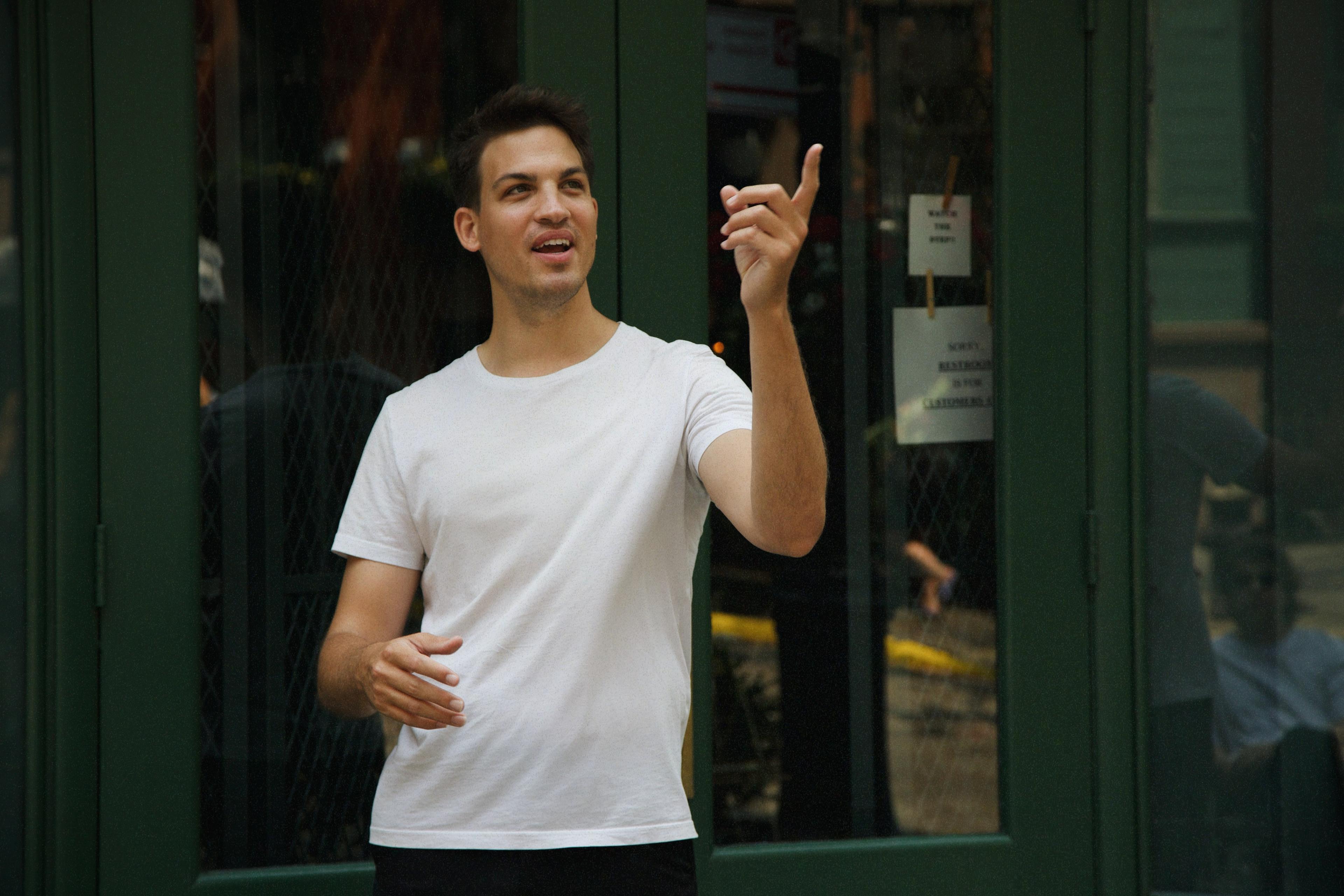
By Eva Sergeeva for Commonplace
As you continue to build your career and company, what are some things you wish you knew when you first started?
As a small scale developer, know that you won't make money for a while unless you're very well capitalized. It's going to take longer than you think, even if you think it’s going to take longer than you think. It's going to cost more money, even if you think it’s going to cost a lot of money. It’s important to set your expectations and know that you're not going to be the next real estate mogul overnight. It's going to be a long process and you won't see those returns in the short term, or even in the medium term. However, if you stack one small win on top of another, then maybe five years, 10 years, or 15 years from now that success can crystallize.
Our built environment operates on a far longer time scale than any of us individually. The greatest cities in the world were, famously, not built overnight, so we can’t expect the life of a real estate developer to be any different. If our cities are the product of many millions of hands shaping them over many hundreds and even thousands of years, why should a developer be able to snap his fingers and have everything done in a day?
That said, there are few things more rewarding than seeing your vision realized. Seeing people living in the units you built, or visiting the coffee shop that you leased out is really pretty cool.
Who has inspired and supported you over the course of your career?
For starters, on even the smallest project there might be a hundred people who are involved. You have the loan officers, accountants, lawyers, cement guys, framers, electricians, plumbers just to name a few, and maybe they each have people who are supporting the project. Every individual person helps bring a project to life. It's kind of like an ant colony – there might be the queen ant, but she can’t do anything without everyone else behind her.
More tangibly, I've had the great fortune to have people look out for me every step of the way. Of course, it doesn't come without work – no one’s going to call you out of the blue and give you an opportunity. But between my first internship in Philadelphia with this really wonderful firm, Iron Stone, and Matt Canno; to working in LA with Joey Miller and David Fishbein at Runyon, both of whom I really admire; through my time at WashREIT, with folks like Mandi Wedin, Anthony Chang, and Chris Horning and so many other great figures; I can name dozens of people who have helped me along.
Then, of course, your family – you don't get anything done without them. And my partners Roee Gold and Gabriel Freifeld, who have been tremendous. There are so many others, some who had no stake in me, but helped me just because they were passing that baton forward. I'm not going to be able to name them all, but they have all just been incredible folks and hugely impactful.
All that to say, you never do anything on your own and you don't accomplish anything without people looking out for you.

Coby Lefkowitz
Backyard
